Updated 12/2014
Ever notice that the highest rated cigars are usually aged Cubans? In Cigar Aficionado, these cigars are listed in the esteemed Connoisseur’s Corner. There, it seems, the oldest cigars get the highest scores. For example, in the December 2011 issue, a 1956 H. Upmann no. 120 hit a perfect 100. Coming in second at 98, was a 1959 Montecristo no. 1, followed by a 1998 Trinidad Fundadore with a 96. At face value, it would seem that the older a cigar got, the better it would taste. This assumption is supported by a ton of Internet chatter stating as much. We read about how a cigar “should age well”, or a box should be “put away for aging”. As a young (young-ER) cigar smoker, I was eager to participate in the aficionado lifestyle: collecting cigars and aging them to perfection. I wanted to get some of that connoisseur action. The following is what I’ve learned about cigar aging; first hand, and from others who have smoked aged cigars on a regular basis. It’s a story of both disappointment and exhilaration.
Why age a cigar at all?
For a cigar to be good, its tobaccos must be well fermented. This takes time, and is done in stages. The best cigar makers carefully monitor each stage and know when the tobacco is at its peak of flavor. It has been my experience that the best cigars are often made by smaller, sometimes family owned, cigar companies. These boutique manufacturers are personally invested in the quality of their cigars, and their products reflect a careful attention to detail. These cigars are always well fermented, and as such, can be enjoyed immediately upon purchase. But if a cigar is “under-fermented”, it will taste sour and have a slight ammonia odor. By putting these cigars away, a slow fermentation process continues inside the cigar box. How long a cigar needs to “sit”, will vary depending on the cigar.
In this day and age, most non-Cuban cigars (NC) are fully fermented when rolled. They require no additional storage to reach their peak flavor. But Cuban cigars (CC) are a different story. The current state of the Cuban cigar industry is such that demand has outstripped their supply of well-fermented tobacco. Plus unskilled rollers are used to meet the worldwide thirst for CCs. To my taste, it seems that the higher end CC brands get the best stuff, rolled by the best rollers, while the less expensive brands suffer. Smoke a Cohiba Behike (at $50/stick) and you will taste beautifully fermented tobacco at its peak. Compare that to other, cheaper brands, and you will experience a vast difference in quality. Construction issues aside, many CCs need extra time to reach their flavor potential. Some experts say two years is the earliest a CC will reach its peak, while others say five or more years. Taking into account the Connoisseur’s Corner, it would seem that that longer a CC sits, the better it will taste.
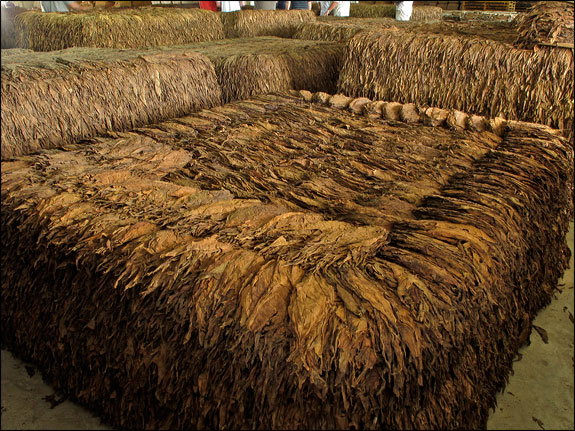
Tobacco fermenting in a pilone.
In an effort to fulfill my aspirations of becoming a true aficionado, I started collecting and aging cigars in 2005. Reading everything I could find on the subject, I embarked on a quest for knowledge. In the last ten years, I’ve accrued of lot of knowledge…and cigars. Reading Cigar Aficionado has served me well. It is a tremendous source of qualified opinions, and insider information. Also, my pilgrimages to Esteli, Nicaragua and Santiago DR, have enhanced my love and appreciation for the cigar industry. With more knowledge came an increased sense of urgency. I wanted to try EVERY new cigar that had a 90+ rating. Of course that was impossible, so I carefully chose which cigars to buy. Over the years I’ve amassed a nice collection. And, over time, my collection would age and get better with each passing year. Or so I thought.
Okay, I bought some cigars, now what?
When we first buy a cigar, even just a few weeks of aging seems to enhance its flavor. This is particularly true with sticks bought from the Internet. Perhaps the shock of transit somehow disturbs the tobacco. Fluctuations, in temperature, altitude, and humidity during shipping may be a factor. After the initial few weeks of storage, there seemed to be little change in quality within the first year. So I figured that to really get that “aged flavor”, more time was needed. Putting boxes away for years was the only way to see, first hand, what this aging thing was all about.
Trials and tribulations.
Cigar collecting is challenging. To do it right, many factors must be addressed: perfect temperature and humidity are crucial and hard to maintain; storage space can be challenging; building a walk-in humidor is costly; mold needs to be avoided; and the dreaded tobacco beetle can show up unannounced. To keep things from getting out of hand, daily inspections are recommended. Through the years, I have carefully stood guard against all these cigar adversaries.
In the beginning.
The first action that affects cigar flavor is the removal of the cellophane sleeve. Left on, the cello gives a cigar a factory-fresh flavor profile. This is when a cigar will have maximum complexity. Stored in cello, cigar flavors are easier to detect, and seem to be almost in relief. Within hours after removing the cello, a cigar will “air-out”, and lose that factory aroma. Some prefer to do this while others like the heightened flavors of a protected cigar. Because cellophane keeps a cigar “fresh”, it significantly slows the aging process. Some smokers remove the cello immediately upon purchase. By doing so, they try to accelerate aging. But is this a good thing?
Aging too fast.
After visiting a number of NC cigar factories, I’ve grown to love the “factory fresh” cigar flavor. These days, the best blenders are creating cigars that are meant for immediate consumption. They use the best tobaccos at the peak of fermentation. The question is would additional aging make these sticks better? What I’ve found is that a great cigar tastes best a few days after the cello is removed. This rounds-out the flavors and makes the blend taste more “homogenized”. It’s like a tomato sauce that simmers on the stove. At first the flavors are distinct and separate. But after a few hours the ingredients blend in a more harmonious way. But, like tomato “gravy” (as Tony Soprano called it), simmering, or aging, too long can make a blend taste flat. Indeed, many of my cigars have now started to lose flavor over time.
But this is a generalization and not always true. Cigar aging is not an exact science. Some ready-to-smoke cigars do improve over time. But at some point, a cigar will peak in flavor. After that it’s a matter of diminishing returns. Because of this, it’s good practice to sample cigars periodically during the aging process. At some point, flavor, balance, and smoothness will merge, giving a cigar a special “je ne sais quoi”. It is then time to enjoy the rest of the box.
The cigar collector’s dilemma.
So now, nearly a decade into cigar collecting, I have a lot of cigars. Many are getting old enough to be considered “aged”. My oldest cigars are, indeed, going through a metamorphosis. Some of my NCs have lost flavor, while others have achieved a softer, richer quality. My collection of CCs are another story. Just this weekend I sampled a Cohiba Siglo IV that had been aging for about five years. Upon lighting I could tell immediately that this cigar was exceptional. The more I smoked, the better it tasted, and when done, I had a feeling of having experienced a truly great cigar. Until recently, I thought these cigars were simply over rated, but I now can see that CC’s absolutely need time to reach their potential. So, it would seem that, indeed, at least five years is what a CC needs to reach greatness. Now that this box has hit its prime, I will continue to enjoy them until, regrettably, I smoke my last stick. But this hasn’t been the case for all my CCs. Many of them started out rough, and five years into aging, don’t taste much better. It’s simply impossible to tell which cigars will truly age well. Sometimes I wish I had never invested the time and money to amass a cigar collection. But when I smoke a great cigar that only age can create, it all seems worth the effort.
Looking back, here’s what I’ve learned:
Leave the cello on. I buy more cigars than I smoke, and don’t want them peaking before I get to them. Leaving the cello on will slow down the aging process. For me that’s a good thing. I will, however, keep a few “naked” in the box for current consumption. Boxes that arrive sans cello will be sampled more often to gauge their progress.
I prefer new NC cigars over new CCs. The great cigar blenders of today are making some of the best cigars of all time. They blend the richest tobaccos to create complex flavor profiles of unprecedented quality. For these cigars, a few weeks, or months, out of the cello is all that’s needed to round out any rough edges.
Watch the temperature! Every summer, when the temperature gets above 76 degrees, I lose hundreds of dollars worth of cigars. The tobacco beetles come alive when it is warm, and many CCs are poorly fumigated. That leaves them vulnerable to ruin.
The Connoisseur’s Corner is a myth. I recently had a discussion about cigar aging with someone who has sampled many old cigars from European collectors. He said that these cigars are fun to smoke as a novelty. An old cigar conjures up images of bygone years, and its rarity makes it a special event. But flavor-wise, he said the cigars are very bland. After they are finished, he then needs to smoke something “really good”.
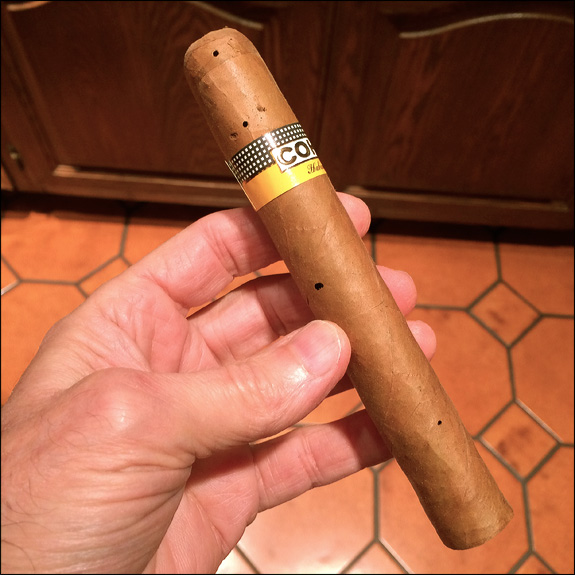
The ravages of the tobacco beetle.
What now?
So here I am, with a closet full of cigars, all in various stages of aging. I continue to sample my myriad boxes, and make mental notes on how they are doing. But the cigars I most often reach for, are the ones I enjoyed when new, and then got a little better with the cello off. As far as being a true Connoisseur, I’m still waiting for my collection of CCs to get epic. Let’s see how they do over the next ten years.
Thanks for listening,
Joe




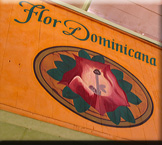
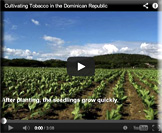

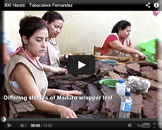
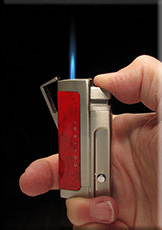

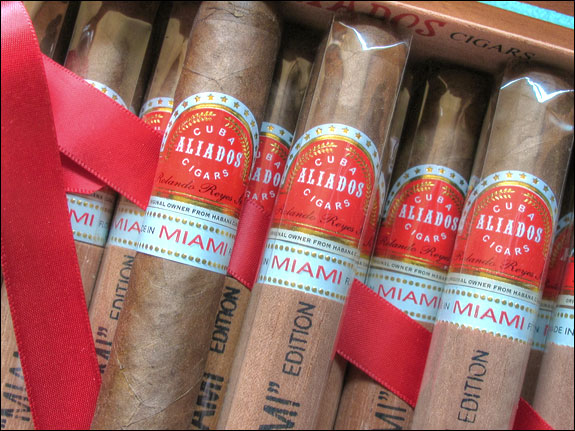
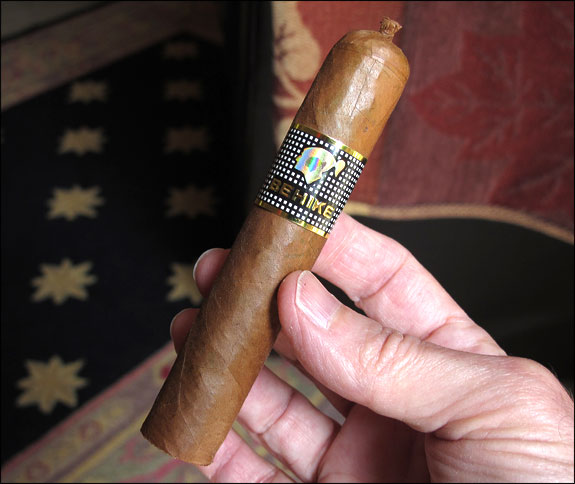
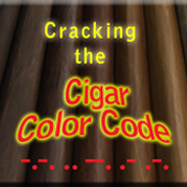


Outstanding. Glad to see you back.
I smoked a pair of CCs gifted my by a Canadian friend. Not the least impressed. Smoked a pair of machine rolled perfectos rolled in 1941. Inferior to similar perfectos from the same manufacturer made this year.
On the other hand, those same perfectos made this year do remarkably improve with two or three months age.
Usually, when buying premium cigars I look for clearance boxes that have already been aged a couple years among the B&M’s stock.
I know when I roll a cigar, six months make a vast diff, not only in how smooth they smoke, but also in how tight and smooth the wrapper is.
Good to see Robusto Joe back at it.
Thanks webmost. It’s great to be back! And thanks for your comment!
I agree. I’ve only aged a couple of years, but if anything, I prefer the newer cigars more. I think 3-6 months aging for me suits my needs.
Noobie enthusiast , just got a box of 25 single 2 , how should I handle this box ? I want it to age a bit , do I open the box and throw them cigars in my humidor ? Or should I leave them in there and try to store the box somewhere humid downstairs ?
Hi Phil,
You are in a situation that all of us have been through when we purchase our first box of cigars. Yes, you can empty the box into your humidor, OR, seal the box in a zip lock bag, put that bag containing the box, inside another zip lock bag along with a folded, moistened paper towel. That will keep your Siglo 2s happy.
Siglo 2’s , darn autocorrect
You still watching this RobustoJoe? Nice article. Only thing I found to disagree with is the part about fermentation continuing while the cigar sits in your humidor. This can’t quite be right. The chemical changes in cigar fermentation are the result of heat, pressure, and the relative absence of oxygen in the interior of the pilons. None of these conditions obtains once a cigar is rolled and stored properly for smoking. I think something different is going on as cigars age.
You make a good point, Mathew. The pilon sets up the perfect environment to facilitate fermentation. But that process can take place under less ideal conditions, albeit at a much slower rate. I know this because I’ve had apple cider ferment in my refrigerator. Even my pickles get carbonated if left too long in that cold environment. So I think the chemical change that occurs within cigars, while aging, is a form of fermentation. But I’m not a bio-chemist.
Hi RobustoJoe! Thanks for your reply. Of course juices, pickles, like wines continue to evolve in the bottle, but that’s because they are liquids. It is the water (or alcohols, acids, etc) that facilitate those changes. Cigars are only a little moist. I agree that chemical changes continue in them but of a different kind. It isn’t so much fermentation that builds up new molecules, but rather that the existing molecules break down and evaporate. Importantly, they break down and evaporate at different rates and that is what changes the flavors of cigars as they age. I’m not a biochemist either, but I have had a lot of biology and chemistry education including a specialty in alcohol fermentation. I’m partly guessing here, but I would like to learn more. Perhaps I’ll have to take that tobacconist university course after all! 🙂
Your points are well taken. If you can identify the chemical change that makes cigar aging possible, please post your results. I’d gladly change the wording in this article to reflect your findings.
Hi colleagues; my name is Amaury Borges Miranda. I am a Cuban biochemist with 13 years of experience inside the cigar tobacco industry in Cuba. My research interest is the applications of sensory and consumer science to product development. The chemical changes that take place in the cigar aging process can be considered as a type of fermentation at a low rate like Robusto Joe said. As Mathew said, the tobacco leaves have a small moisture content; so, you can expect chemical changes of other type than in the case of liquids, because the molecules have less mobility. The chemical changes that occur in the cigar case are driven by the metabolism of the microorganisms that live in the tobacco (bacteria, fungus and yeast). The most important group of them are those who have affinity for nicotine and other alkaloids, mainly bacteria. In other words, nicotine is their food. There are several groups that have been studied by the industry with the aim of accelerate the fermentation process; so, it would warrant a supply of well fermented leaves to the industrial production process. Funguses are not tolerant to the high temperatures of the “pilones”, but their reproductive structures remain alive and can get active in later stages of the processing of the raw matter, and show their catalytic potential. Bacteria are more tolerant to high temperatures. These microorganisms are responsible for the fermentation at a lower rate that continues taking place in the raw matter and in the cigar after the fermentation occurring in the “pilon”. It is known that bacteria living inside the tobacco batch are capable of inducing the synthesis of enzymes. A group of them are released to the outside of the cell, and makes the substrates more available. The rest make their work inside the unicellular organism of the bacteria and finish nicotine degradation. All these enzymes are inducible regarding the presence of the substrates, namely the chemical components of the tobacco. Nowadays, it is argued that the processes of fermentation and aging of the raw matter and the cigar should be explained by a combination of pure chemical changes and changes produced by the battery of enzymes provided by the bacteria living in the tobacco batch.
I disagree with most of this…the start being that since tobacco in Nc cigars are aged there is no need to age?? It’s as stated the marriage of the oils that’s the point. I don’t care how long the tobacco was aged I am more concerned about when it was rolled. Most Cuban filler is aged two to three years before being rolled…that says a lot compared to today’s market of nc’s. Some are not even aged that long. Yes I do age cc’s but that’s because I age everything! Where it’s from and how long the tobacco has aged for prior to being rolled is not a concern of mine. It’s when the oils wil meld and even plume that I consider for the most part.
LMC, have you ever taken a tour of a cigar factory? If so, then you know that cigars are aged in a “cold room” for at least six months before boxing. That’s to overcome the “sick period” and to allow the tobaccos to meld. I can assure you, after visiting many cigar factories in Nicaragua and the Dominican Republic, all cigar factories age their tobaccos many years before rolling. I know from years of experience that fermentation is the key to great cigar tobacco flavor. If it’s not done before rolling, then you are stuck needing to age for a very long time. Even then, there is no guarantee a cigar will ever taste good. Also,as Amoury states above, cigar aging improves cigar flavor because fermentation continues while the cigars rest.
Very good info here. I agree with what Robustjoe has written, and so thankful for the info provided by Amaury Borges Miranda because it validates some of what I have learned, although I do not have his credentials. I grow tobacco. I plant it, grow it, cure it, ferment it, roll it, and finally smoke it. My understanding of all of the processes I undertake has been basic, and simple. I understood the enzymes did most of the work in the fermentation process, but know I understand the process is far more complex. Thanks for the lesson. I also purchase ready made cigars. I know that aging them leads to a much better smoke, regardless whether or not they consist of fermented and well aged tobacco leaf. This week I smoked a Plasencia, La Flor de Maria Mancini, Magic Mountain, Robusto that had been hidden in the recesses of one of my humidors for 17+ years. WOW!!! That was a fabulous smoke!!! Very mellow-bodied, rich tobacco taste, sweet on my tongue, and I smoked it to a little, itty, bitty nub! I also inhale all my cigar smoke, and this one gave me a euphoric nicotine kick! The sort of kick where you know it would not be a good idea to operate heavy machinery during or soon after smoking it. Next, with regard to fermenting tobacco: there are some shortcuts that can be taken and still achieve some very good results. Since I do not know how open others are to these ideas it is probably best to simply say that tobacco leaf, after its cured, can be easily fermented in 30 days. Of course if one desires the maduro taste, fermenting does take a little longer, about another 30 days. Plus, the fermented tobacco needs a little resting time before its ready to smoke, and of course extra aging is always advisable. Blending tobacco leaf to achieve fabulous results is a different chapter in the story. Very complex.
I think you’re way overestimating the lack of NC need for aging.
They often don’t need years, no. I’ll agree there. But the amount of NC cigars I’ve found that are best right off the truck I can count on 2 fingers. Practically all of them bring out much more complex and enjoyable flavors (and lose a lot of bitterness and ammonia harshness) with at least 3 months in a humidor. Sometimes 2 months, but more often I’ve found 3 months to be the magic number.
Hi Bryan,
I agree that a few months in the humidor will “soften” the taste of a cigar. Even a few days after purchase will improve the flavor. Cigars should never be smoked immediately upon arrival either from the mail or a store. But, once acclimated in a humidor at home, a good NC will have the blender’s intended flavor upon shipping from the factory.
Greetings from Norway.
I have zero to contribute with to the above discussion for the simple fact that I am a beginner. But on the topic of aging, I have a question for you all that admittedly is a little hazy and tricky to answer, but it goes to chasing the experience that spurred me to delve deeper into cigars so it’s obviously super important 😉
All my adult life, including the more recent (affordable) Habanos I smoked, all my cigar experiences, poor or enjoyable, have fallen somewhere within a spectrum that is… recognizable, for lack of a better term. All except one. In the late 90’ies, I worked in a restaurant kitchen and on a night out, my boss popped inside a non descript building and came out with a Cohiba that he paid the equivalent of roughly 100 dollars for. Naturally, I was allowed to taste, and it just blew my mind. This was nothing like I had ever tasted before. It was like if you drink cheap sour wine all your life, and then one day you get a really good aged one from a good year. It was not a cigar the way I knew them and have known them since (I’ve never had much money anyway, and 100 USD for a single cigar was, and to some extent still is, pretty outrageous), it was like a dessert of smoke. Absolutely mindblowingly good. Unfortunately, I was much too young and dumb to ask for specifics, and I didn’t even know at the time that this was something I’d get into, so I had no real reason to either.
But, as I am now sifting through all the information I can find about cigars, I am starting to wonder if I am approaching the chase in a wrong way. That it’s not the brand or the price or review scores, but the age. It must be said that since I’m new at taking this seriously, my references aren’t that many, so this is just a wild theory really but one that may be worth considering. I feel that the industry or culture if you will, holds some kind of delicious secret, and I don’t even know where to look to find it.
Any comment or tip would be appreciated. Wild speculations are welcome.
Thank you for reading. Sincerely,
This is a great anecdote. Here are my thoughts: Our enjoyment of cigars is influenced by many things…what is in our stomachs, the company we are keeping, the hype around the cigar in our hands, our own personal tastes, the quality of the cigar, and on and on. Sometimes I’ll pick up a favorite cigar and be utterly disappointed. Other times, I’ll smoke a cigar that had disappointed me in the past, only to find it enjoyable when smoked again. The circumstances surrounding the cigar you smoked back in the day probably had an influence on how you experienced it; your boss emerged from a mysterious building, holding a legendary cigar costing a large sum of money. You were primed for a special experience.
But it is true that all cigars change with age. Some get better while others lose flavor. I’ve had mind blowing cigars right out of the cellophane that were from a new box. And some cigars that were no good when new, did improve with age. I’ve also aged bad cigars that never got any better. Age doesn’t always make a cigar great. A great cigar is one that you smoke and love, regardless of age, or how much you paid for it.
It’s important to understand your own palate, and to know what you look for in a good cigar. Seek out the ones that suit your palate and have an open mind. You may never smoke a cigar as good as the one you had in your story, and time has augmented the experience through your memory. But if the circumstances are right, the company you’re with is charming, and the setting is perfect, a fine cigars will provide you a sublime experience.
Thank you for a great response.
I appreciate your perspective and while it’s all undoubtedly true, I’m pretty sure that the cigar also had some qualities to it that I’m just not used to. Not only because I trust my own ability to make that judgement with a modicum of objectivity (I don’t really impress easily), but also because there were other people there who also tried, and while they didn’t pay attention to what had happened and had maybe less of an interest in any smoking experience, they too sort of paused and raised their eyebrows when they tasted it. It really was something else.
So what is my palate then? If I were to describe what I have found to dominate all cigars except that one, I’d call it a kind of “tangy, harsh, acidic, bitter” kind of taste. It may be what most refer to as “peppery” or it may not. I’m not sure. The legendary Cohiba on the other hand was not dominated by this. It was there, but it was very subdued. Like a spice added to a stew to give it an edge, but the bulk of the taste and aroma was a creamy, silky smooth collection of flavors I can’t remember anymore, if indeed I was even capable of identifying them at the time.
I was thinking that maybe this tangy taste is something that typically subsides with age, and that it is this that I enjoyed so much. That’s why I formulated this aging theory. From what I have gathered in my cigar ignorant state, aging typically lends itself best to full bodied or strong cigars. If I am not mistaken, this profile would fit say an aged Cohiba Behike.
I’m really sorry if I sound argumentative, but the detective in me can’t help but look for some “solid” evidence 😀
Thank you again for your thoughts. Sincerely,
Cuban cigars are blended to be mild, and the Behike is a mild cigar by Non-Cuban cigar standards. If your palate is used to Cuban cigars, then the stronger, ligero laden, cigar of, say, Nicaragua would taste extremely peppery and in lots of cases, bitter. I don’t like the trend of blending tons of ligero into a cigar to boost its strength at the expense of a balance cigar flavor profile. And, I stay away from bitter cigars. There are many of Non-Cuban cigars that are smooth, creamy, with vanilla, and floral notes. I suggest the 601 Red Label Torpedo. It’s inexpensive and a delightful cigar to smoke. Another is the Padron Damaso. As I said, it’s important to seek out the cigars that suit your flavor preference. BTW, when I was in Cuba in 2017, I smoked a number of cigars, custom blended by people in the business, one of whom was Hirochi Robaina. These cigars were MUCH stronger that the commercial Cuban brands. That demonstrated to me that the Cuban cigar brands are intentionally blended to be mild. It is not a function of the tobacco itself.
Your experience with that “magical Cohiba” is a great story, and I don’t know if you’ll ever smoke a cigar as good as that one. But I’m sure you can find other great cigars to enjoy almost as much. There are tons of great cigars out there to enjoy.
Thank you again, and thank you for those recommendations.
Unfortunately, both those brands are very difficult to track down in my country (Norway), and personal import is a no go. I was hoping one of the few vendors we have would at least stock some Padrons, but no luck. The way it is here is kind of the opposite of the US. The market is dominated by Habanos. The best stocked shop has started to come around on Nicaraguan and Dominican brands, but the selection is still very limited. I have in fact never knowingly smoked a cigar that wasn’t a real Cuban (That’s about to change, I have an ‘Oliva Connecticut Reserva Robusto’ in my humidor), but I must hastily add here that I smoked a lot of cigars in the past that I knew nothing about.
This quest is tricky, but I guess all quests worth while should be. Added to my ignorance is the general confusion that seems to exist in the market concerning what terminology and labeling to use when describing cigars. I could show you our biggest shops calling the same cigar a medium, medium+ and a very mild cigar all in a few paragraphs without specifying anything. There are no templates and no clear consensus.
I have started to realize that what people say about strength and a few other key terms, is useless to me. Some are about nicotine, some about body and flavor intensity and some about spice and general harshness. And some I suspect, not even the reporter is fully aware of what it’s about. I want all of the nicotine, body and flavor, I just don’t want the “harshness” and I strongly suspect that these are not necessarily mutually exclusive. A keyword that MIGHT be of some use to me is ‘smooth’, and typically smoothness is often used in conjunction with age. I have started to become a little more informed about the aging stages of tobacco and the different fermentation techniques used, so I will continue my quest if not undaunted, then at least stubbornly 🙂
So here we are then, ironically we’ve come full circle. I apologize for seeming to end up on the very note (albeit speculative) that your article questions in the first place. I swear I have no other agenda than trying to find my perfect cigar, and I’m scared that somewhere down the road I’ll discover that that means having to buy vintage Cohibas. Haha.
Thank you again. You’ve really helped me think about these things and hopefully narrow down my search.
All the best. Sincerely,
I see your dilemma. In your situation, one could make the argument that cigar smoothness, or lack of harshness, is about age. That’s because the Habanos cigar industry is in complete disarray. Demand outstrips supply, and Cuba is cranking out cigars that are too often poorly rolled (plugged), and with under-fermented tobacco (harsh). That’s why there is the axiom which states that Cuban cigars need to be aged 4-5 years before smoking. As you have started to notice, and fortunately for European cigar smokers, non-Cuban cigars are finally starting to get local distribution. I think this will increase in the upcoming years, especially as Cuban cigar smokers get more and more disillusioned with the poor quality of the cigars that are available.
Your premise is incorrect. Your first sentence, “ever notice…” is not true. In fact, the top 10 or 25 cigars are consistently NOT Cuban and certainly not aged Cubans.
I was referring to the Connoisseur’s Corner of the cigar review section of the magazine. Those cigars rate up to 100 and are predominantly aged Cuban cigars. The examples I give in the article illustrate this.